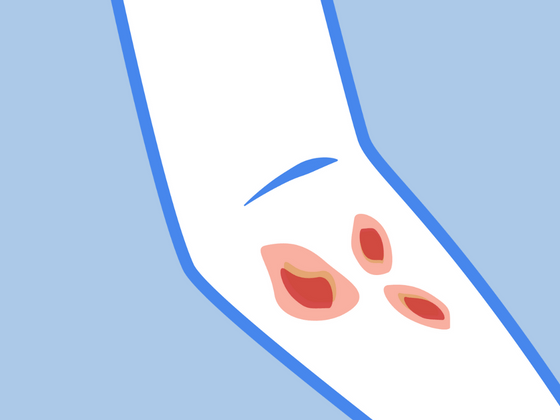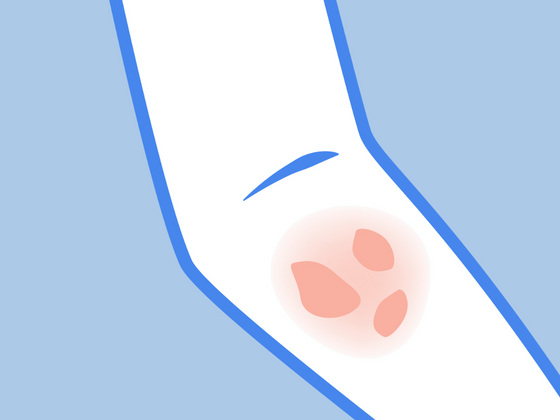A refreshing swim in the ocean should leave you feeling relaxed and not covered in an itchy rash. However, many swimmers experience skin irritation after spending time in salt water. Whether it's due to sea lice, swimmer's itch, or another reaction, these rashes can range from mild to severe, causing discomfort for several hours or even days.
In this blog, we're going to explore:
- The common causes of skin rashes after swimming in the ocean
- How to recognize symptoms and when to seek medical attention
- Effective treatments and prevention strategies to keep your skin rash-free
Read on to learn how to protect your skin and enjoy the water without the itch!
Common Causes of Skin Rashes After Swimming in Ocean
Various factors, including tiny parasites, jellyfish larvae, and bacteria in contaminated water, can cause a skin rash after swimming in the ocean. Some of the most common culprits include:
Sea Lice (Seabather's Eruption)
Despite the name, sea lice are not actual lice. They are microscopic larvae of thimble jellyfish that get trapped under a bathing suit and release toxins, causing an itchy sea lice rash. The rash usually appears several hours after swimming and may include small blisters and intense itching.
Swimmer's Itch (Cercarial Dermatitis)
This rash is caused by tiny parasites from infected snails and birds that mistakenly burrow into human skin. It is more common in freshwater lakes but can also develop in salt water, especially in marshy areas. Symptoms include red, itchy spots and, in some cases, severe itching or small blisters.
Other Marine Irritants
Contact with certain species, such as sea anemones or small jellyfish, can lead to an allergic reaction or rash. Areas covered by a swimsuit may be affected the most, as the irritants get trapped against the skin.
Swimming in infested water or areas with posted warnings about water quality increases the risk of developing a rash. Keep an eye out for purple flags at the beach, which indicate the presence of marine pests.
Recognizing Symptoms
Most skin rashes after swimming in the ocean are mild and resolve independently. However, symptoms can vary depending on the cause and severity of the reaction. Common symptoms include:
- Itchy skin that worsens over time
- Small blisters or red bumps on affected areas
- The rash usually appears in areas covered by a bathing suit
- Mild swelling and discomfort
In more severe cases, some people may experience systemic symptoms such as fever, chills, nausea, or difficulty breathing. If a rash spreads across the body, causes intense pain, or is accompanied by other symptoms, it's important to see a healthcare provider.
Soothing your Rash
If you develop swimmer's itch, sea lice rash, or another ocean-related skin condition, there are several treatment options to help soothe the irritation:
Use a Gentle Moisturizer
Hydrating the skin with a gentle moisturizer helps restore the skin barrier and reduce irritation. This Baby & Adult Skin Soother is a natural option made with just three Chinese herbs, olive oil, and beeswax. Originally created for eczema, this balm calms dry, itchy skin and soothes rashes, redness, and irritation - ideal for relief from swimmer's itch or sea lice rash. It's free from artificial fragrances, preservatives, and chemicals.
Restore Moisture to the Skin
Your skin may become dry and irritated after exposure to salt water or freshwater. A deeply hydrating cream, like this Soothe My Skin Rejuvenation Cream, can help replenish lost moisture and support skin healing. With emu oil, aloe vera, and chamomile extracts, this formula penetrates deeply to calm inflammation, reduce redness, and nourish damaged skin, making it an excellent choice for soothing swimmer's itch or sea lice rash.
How to Prevent Swimmer's Itch
To prevent future rashes from developing on a person's skin, take the following precautions:
- Shower immediately after swimming in fresh or salt water to rinse off any lingering parasites or irritants.
- Towel dry thoroughly, as some parasites only penetrate wet skin.
- Avoid swimming in contaminated water or areas with posted warnings about marine pests.
- Wear protective swimwear, such as full-body swimsuits, to reduce skin exposure.
- Don't feed birds near swimming areas, as this can attract infected birds and increase the risk of cercarial dermatitis.
Enjoy the Ocean Without the Itch
A skin rash after swimming in the ocean can be an annoying and uncomfortable experience. Still, with the proper precautions and treatments, you can quickly minimize the risk and find relief. Understanding the common causes, recognizing symptoms, and using effective remedies can keep your skin healthy and irritation-free.









